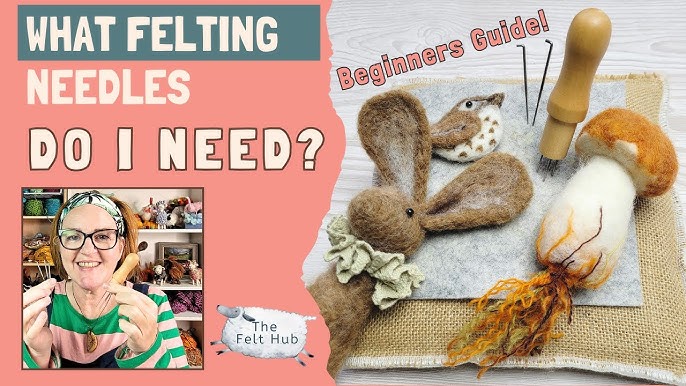Felting Basics: A Quick Guide
By Marilyn Lopez / July 29, 2024 / No Comments / Felting
Felting is a fascinating craft that transforms wool fibers into a solid fabric through a combination of heat, moisture, and agitation. This guide provides an overview of the basic techniques, tools, and materials needed to start felting, whether you are interested in needle felting, wet felting, or both.

Felting
What is Felting?
Felting involves the matting together of wool fibers to create a dense, durable fabric. The process can be accomplished using various methods, each yielding unique results. Needle felting uses a special barbed needle to interlock wool fibers, while wet felting involves the application of water and soap to shrink and bond the wool fibers.
Essential Materials
To get started with felting, you need a few essential materials. Here’s a list of the basics:
- Wool Roving: This is unspun wool that is ideal for felting. It comes in a variety of colors and textures.
- Felting Needles: These needles have barbs that catch and tangle the wool fibers. Different gauges (thicknesses) are used for different purposes.
- Felting Mat: A soft, spongy mat provides a surface to needle felt without damaging your needles or surfaces.
- Soap and Water: For wet felting, you need soap and warm water to agitate and shrink the wool fibers.
- Rolling Mat (for wet felting): A bamboo mat helps roll and compress the wool during the wet felting process.
Basic Needle Felting Techniques
Needle felting is straightforward once you understand the basic techniques:
- Prepare Your Wool: Start by pulling apart small amounts of wool roving. This makes it easier to work with and helps the fibers bond more effectively.
- Shape Your Project: Place the wool onto the felting mat and use the felting needle to poke the wool repeatedly. The barbs on the needle catch the wool fibers and interlock them, gradually shaping your project.
- Build Up Layers: For more complex shapes, add layers of wool and continue to needle felt until you achieve the desired shape and density.
- Finish Your Piece: Once you are satisfied with the shape, continue to needle felt until the surface is smooth and the fibers are well interlocked.
Basic Wet Felting Techniques
Wet felting involves a few additional steps compared to needle felting:
- Prepare Your Wool: Lay out a thin layer of wool roving on a flat surface. Overlap the layers to ensure even felting.
- Add Soap and Water: Sprinkle warm, soapy water over the wool and gently work it into the fibers. The soap helps the wool fibers bond together.
- Agitate the Wool: Rub the wool gently with your hands or a rolling pin to create friction. This agitation helps the fibers interlock and form a solid fabric.
- Shape and Rinse: Once the wool has felted to your liking, shape it as desired and rinse out any excess soap. Allow the piece to dry completely.
Tips for Successful Felting
- Work in a Clean Space: Felting can be messy, so it’s best to work in a clean, organized area.
- Experiment with Colors: Don’t be afraid to experiment with different wool colors and textures to create unique effects.
- Take Your Time: Felting requires patience. Allow yourself plenty of time to practice and refine your techniques.
Felting is a rewarding craft that allows for endless creativity. Whether you choose needle felting or wet felting, understanding these basics will help you get started on your felting journey.
